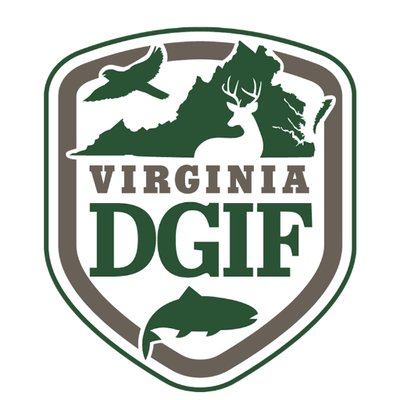
This is the first documented occurrence of red-cockaded woodpeckers residing on the WMA. The pair of woodpeckers are banded and originated from The Nature Conservancy’s Piney Grove Preserve, which neighbors Big Woods WMA.
The Preserve has long harbored the sole remaining population of red-cockaded woodpeckers in Virginia, although a second population is in the process of being re-established in the Great Dismal Swamp National Wildlife Refuge by the U.S. Fish and Wildlife Service, the DGIF and partners.
The DGIF’s Executive Director Bob Duncan lauds this discovery as a conservation success for Virginia.
“The long-term commitment of our agency and its partners to acquire and actively manage the Big Woods WMA for red-cockaded woodpeckers, and many other species, is tremendous, said Duncan.
The arrival of these red-cockaded woodpeckers at the WMA marks a major landmark in DGIF’s conservation efforts for this endangered species. Under the federal Endangered Species Act, the DGIF has a Cooperative Agreement with the U.S. Fish and Wildlife Service to serve as the lead agency for the conservation of protected animal species in Virginia, including red-cockaded woodpeckers.
The Big Woods WMA was purchased in 2010 with funds provided in part by the U.S. Fish and Wildlife Service’s Recovery Land Acquisition program, which provides grant funds to support the conservation of habitat for endangered and threatened species. Sergio Harding, a bird conservation biologist with DGIF, shared his thoughts on the agency’s journey of recovering this endangered bird.
“Through our contributions of funding, equipment and staff time, the DGIF has long supported the great conservation work that our partners have done on the Piney Grove population of red-cockaded woodpeckers. In recent years we have become more directly involved in such work through habitat management to benefit the species on Big Woods WMA – it is gratifying to see this work start coming to fruition.”
One of the most critical restoration efforts by the DGIF has been reintroducing fire to the woodland through annual controlled burns. Fire historically played an essential role in shaping the pine savannas that the woodpecker depends on — it maintains their open conditions by preventing excessive growth of hardwood trees and shrubs, while stimulating the growth of native grasses and wildflowers.
To further aid in the restoration process at Big Woods WMA, the DGIF has also strategically thinned trees and planted longleaf pines, the pine species preferred by red-cockaded woodpeckers and the historically dominant tree of Virginia’s pine savannas. The arrival of these woodpeckers in Big Woods WMA demonstrates that the DGIF’s restoration efforts are making a difference and Piney Grove Preserve’s woodpeckers are finding the expanded habitat they need.
“We’re excited to see our work on the ground pay off,” says Steve Living, the Regional Lands & Facilities Manager overseeing the DGIF’s habitat work at Big Woods. “Over the last six years, our efforts have really accelerated, and you can see the difference in the habitat.”
Next steps to support these birds, and any future additional red-cockaded woodpeckers settling into the WMA, include the continuation of the prescribed burning and forest thinning program. Additionally, the DGIF has started supplementing natural cavities (made by the birds) with artificial cavities created through drilling and the use of insert boxes.
Artificial cavities are a proven technique to encourage redcockaded woodpecker population growth by providing ready-to-use cavities, which are a major limiting factor in population growth. So long as the DGIF continues its efforts to maintain Big Woods WMA as a pine savanna, habitat for the red-cockaded woodpecker will only continue to improve.
The birds rely on mature pine savannas with pines aging 70-120 years old, but most of the WMA’s pine trees, outside of the area the birds currently inhabit, are still relatively young.
As the WMA’s pines age with the proper continued management, the DGIF is optimistic that nesting opportunities for the birds will expand to support this growing population of red-cockaded woodpeckers.










